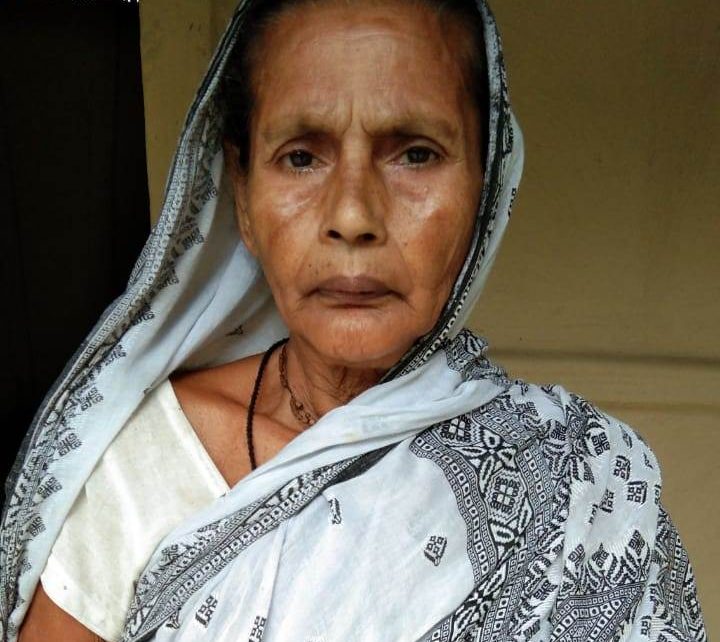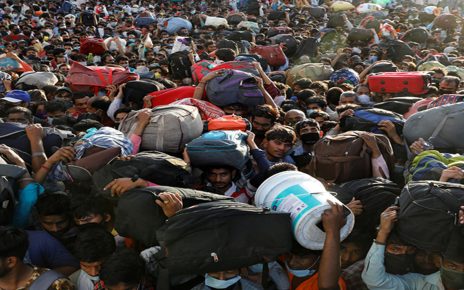By – Suhas Chakma, Director, RRAG
The National Register of Citizens (NRC) had provisionally identified over 4.1 million people as alleged foreigners as on 26 June 2019. As the final NRC of Assam is scheduled to be released on 31.08.2019, the most pertinent question is how serious is the influx of the foreigners in Assam, the epicentre for anti-foreigner agitation in the country.
Abnormal growth of the population reflected in the decadal growth rate of population as reported in the census reports of India have been cited as the most important indicator for identifying influx of foreigners into Assam. However, the “Decadal Variation in Population Since 1901 to 2011” of the Census of India shows that there are no indications of any major influx of foreigners into Assam in the post-1971 period, the cut- off date for acceptance of foreigners as citizens of India.
Table 1: Comparative chart of decadal population growth rate in Assam and All India from 1901 to 2011 as per the Census of India[1]
| Decade | Assam (population growth rate) | All India (population growth rate) | Difference |
| 1 | 2 | 3 | (2-4) |
| 1901-1911 | 16.99 | 5.75 | 11.24 |
| 1911-1921 | 20.48 | -0.31 | 20.79 |
| 1921-1931 | 19.91 | 11.00 | 8.91 |
| 1931-1941 | 20.40 | 14.22 | 6.18 |
| 1941-1951 | 19.93 | 13.31 | 6.62 |
| 1951-1961 | 34.98 | 21.51 | 13.47 |
| 1961-1971 | 34.95 | 24.80 | 10.15 |
| Average from 1901 to 1971 | 23.95 | 12.90 | 11.05 |
| 1971-1981 | 23.36 | 24.66 | -1.30 |
| 1981-1991 | 24.24 | 23.87 | 0.37 |
| 1991-2001 | 18.92 | 21.54 | -2.25 |
| 2001-2011 | 17.07 | 17.70 | -0.63 |
| Average from 1971 to 2011 | 20.90 | 21.94 | -1.04 |
The “Decadal Variation in Population Since 1901 to 2011” of the Census of India (Table 1) shows that from 1901 to 1971, Assam’s average decadal population growth rate was 23.95% against All India’s average decadal population growth rate of 12.90%. More specifically, Assam’s decadal population growth rate was 16.99% against All India’s 5.75% during 1901-1911; 20.48% against All India’s -0.31% during 1911-1921; 19.91% against All India’s 11.00% during 1921-1931; 20.40% against All India’s 14.22% during 1931-1941; 19.93% against All India’s 13.31% during 1941-1951; 34.98% against All India’s 21.51% during 1951-1961 and 34.95% against All India’s 24.80% during 1961-1971.
For a period of 70 years i.e. 1901 to 1971, the average decadal growth rate of population in Assam (23.95) was almost double of All India (12.90). This is largely because of the influx of migrants who were now legally accepted as citizens of India under the 1985 Assam Accord. Nonetheless, such large and overwhelming migration for over 70 years had changed the demographic character of Assam and created legitimate fear among the Bhumiputras of Assam of being reduced to a minority in their own land. The Immigrants (Expulsion from Assam) Act, 1950 and the National Register of Citizens of Assam of 1951 failed to control further influx of migrants/refugees as a direct consequence of partition of India in 1947.
By 1979, anti-foreigner agitation led by the All Assam Students Union (AASU) reached its zenith in Assam. However, the AASU ended up accepting those against whom it launched massive anti-foreigner agitation as citizens of India under the Assam Accord. As per the Assam Accord, immigrants who came after 24th March 1971 were declared illegal while those who came between 1966 and 1971 were not to be allowed to vote for 10 years. Those who came after 24th March 1971 are to be identified and deported.
The “Decadal Variation in Population Since 1901 to 2011” of the Census of India (Table 1) also shows that in the post-1971 period, Assam has consistently registered decadal population growth lower than that of All India’s decadal population growth rate upto the last census in 2011. Overall, from 1971 to 2011, Assam’s average decadal population growth rate of 20.90% was lower than All India’s average national decadal population growth rate of 21.94%.
More specifically, Assam’s decadal population growth was 23.36% against All India’s 24.66% during 1971-1981; 24.24% against All India’s 23.87% during 1981-1991; 18.92% against All India’s 21.54% during 1991-2001; and 17.07% against All India’s 17.70% during 2001-2011.
If abnormal population growth rate as reflected in census reports is the determinant of identifying influx of foreigners, Assam had not witnessed any noticeable influx of foreigners in the post-1971 period. At least, major influx of foreigners into Assam in the post-1971 period is not supported by statistics of the Census of India.
In fact, the “Decadal Variation in Population since 1901 to 2011” of the Census of India (Table 2 below) further shows that from 1971 to 2011, Assam had the lowest average decadal population growth rate in the North-Eastern region. During 1971 to 2011, in the North-Eastern region, Nagaland had the highest average decadal population growth rate of42.52%, followed by Mizoram with 35.14%, Arunachal Pradesh with 31.25%, Meghalaya with 30.88%, Manipur with 27.78%, Tripura with 24.27% and Assam with 20.90%. Indeed, Assam is the only State in the North-Eastern region which had lower average decadal population growth rate than All India while all other North Eastern States had higher average decadal population growth rate than All India.
Table 2: Comparative chart of decadal population growth rate in Assam, North Eastern States and All India from 1971 to 2011 as per the Census of India[2]
| Decade | Assam | Arunachal Pradesh | Manipur | Meghalaya | Mizoram | Nagaland | Tripura | All India |
| 1 | 2 | 3 | 4 | 5 | 6 | 7 | 8 | 9 |
| 1971-1981 | 23.36% | 35.15 | 32.46 | +32.04 | 48.55 | 50.05 | +31.92 | 24.66 |
| 1981-1991 | 24.24% | 36.83 | 29.29 | +32.86 | 39.70 | 56.08 | +34.30 | 23.87 |
| 1991-2001 | 18.92% | 27.00 | 24.86 | +30.65 | 28.82 | 64.53 | +16.03 | 21.54 |
| 2001-2011 | 17.07% | 26.03 | 24.50 | +27.95 | 23.48 | -0.58 | +14.84 | 17.70 |
| Average | 20.90 | 31.25 | 27.78 | 30.88 | 35.14 | 42.52 | 24.27 | 21.94 |
The pertinent question is therefore whether all the 41,10,169 persons excluded from the Draft NRC as 26 June 2019 are foreigners. An analysis of the increase in absolute number of population from 1971 to 2018 provides the answer.
Table 3: Comparative chart of increase in absolute number of population in Assam and All India from 1971 to 2011 as per the Census of India[3]
| Decade | Total population at the end of the decade | Increase in absolute number of population from previous decade | Assam (population growth rate) | All India (population growth rate) |
| 1961–1971 | 1,46,25,152 | NA | ||
| 1971-1981 | 1,80,41,248 | 34,16,096 | 23.36% | 24.66 |
| 1981-1991 | 2,24,14,322 | 43,73,074 | 24.24% | 23.87 |
| 1991-2001 | 2,66,55,528 | 42,41,206 | 18.92% | 21.54 |
| 2001-2011 | 3,12,05,576 | 45,50,048 | 17.07% | 17.70 |
| 2011-2018 | 3,50,18,400[4] | 38,12,824 | 17.4% | 17.70 |
| Total increase | 2,03,93,248 | 21.5% | 22.4% |
As per the “Decadal Variation in Population Since 1901 to 2011” of the Census of India and estimated population of Assam and India as on 2018 (Table 3), the total number of increase of population in Assam during 1971 to 2018 was 2,03,93,248 persons. If 41,73,169 persons excluded from the draft NRC are all foreigners, Assam’s population of the citizens in 2018 would have increased by 1,62,20,079 persons only from 1971 to 2018 i.e. 2,03,93,248 citizens in 2018 minus 41,73,169 alleged foreigners. If Assam’s population of citizens increased by 1,62,20,079 persons only from 1971 to 2018, average decadal population grown rate of Assam would be 17.1%[5] against average All India’s decadal population growth rate of 22.4%.
There is no plausible basis to consider that the average decadal population growth rate in Assam would be 5.3% less than that of All India’s average decadal population growth rate from 1971 to 2018. In fact, Assam’s average decadal population growth rate of 21.5% during 1971 to 2018 appears normal and is lower than both All India’s decadal population growth rate and the North East State’s decadal population growth rate. If Assam’s average decadal population growth rate of 21.5% from 1971 to 2018 was normal, it implies that there had not been any noticeable influx of foreigners.
The “Decadal Variation in Population since 1901 to 2011” of the Census of India therefore unequivocally suggests that majority of those excluded from the NRC are actually Indian citizens but suffering the brunt of the anti-foreigner sentiments in the State as a consequence of influx of migrants from 1901 to 1971 and due to the absence of documents, which must be dated before 24th March 1971 i.e. at least 47 years before the NRC effectively commenced, to prove one’s citizenship.
The process of identification of foreigners is part of the administration of criminal justice and illegal entry of foreigners is a penal offence carrying maximum punishment up to five years under Section 14 of the Foreigners Act, 1946.
The Blackstone’s ratio in criminal law provides that “It is better that ten guilty persons escape than that one innocent suffer”.[6] As per the data of the Census of India, the NRC of Assam in 2019 has ended up punishing an overwhelming majority of Indians as foreigners while identifying a negligible number of foreigners.
[1]. Census of India 2011, A-2 Decadal Variation in Population since 1901, p.5, available at http://www.censusindia.gov.in/2011census/PCA/A-2_Data_Tables/00%20A%202-India.pdf
[2]. Census of India 2011, A-2 Decadal Variation in Population since 1901, p.5, available at http://www.censusindia.gov.in/2011census/PCA/A-2_Data_Tables/00%20A%202-India.pdf
[3]. Census of India 2011, A-2 Decadal Variation in Population since 1901, p.5, available at http://www.censusindia.gov.in/2011census/PCA/A-2_Data_Tables/00%20A%202-India.pdf
[4].Population of Assam 2018, https://indiapopulation2018.in/population-of-assam-2018.html
[5]. The formula used to arrive at 17.1% is given below:
20393248= 21.5%
2039248÷21.5%= 94852316
16220079÷ 94852316= 17.10%
[6].Sir William Blackstone, Commentaries on the Laws of England in Four Books, vol. 2 [1753] available at https://oll.libertyfund.org/titles/blackstone-commentaries-on-the-laws-of-england-in-four-books-vol-2/simple



